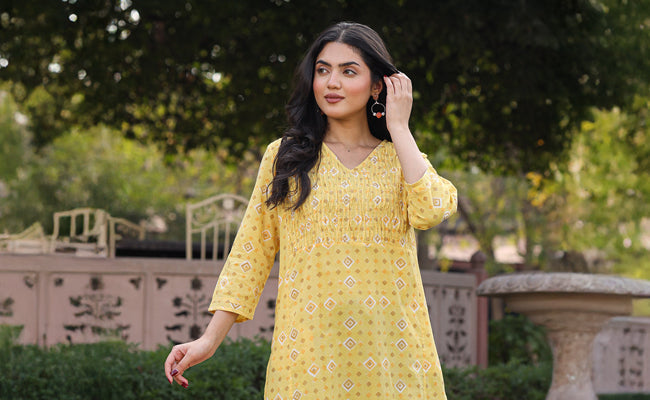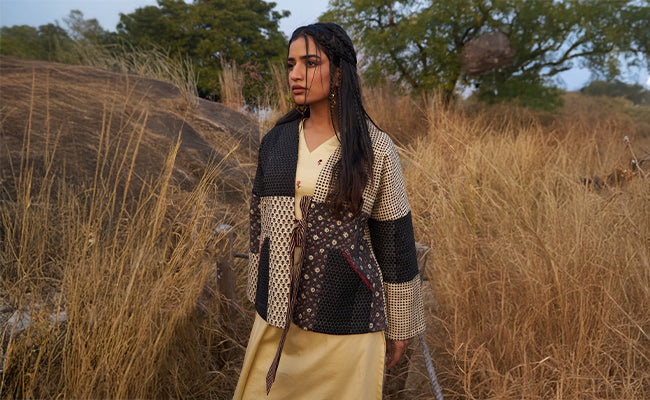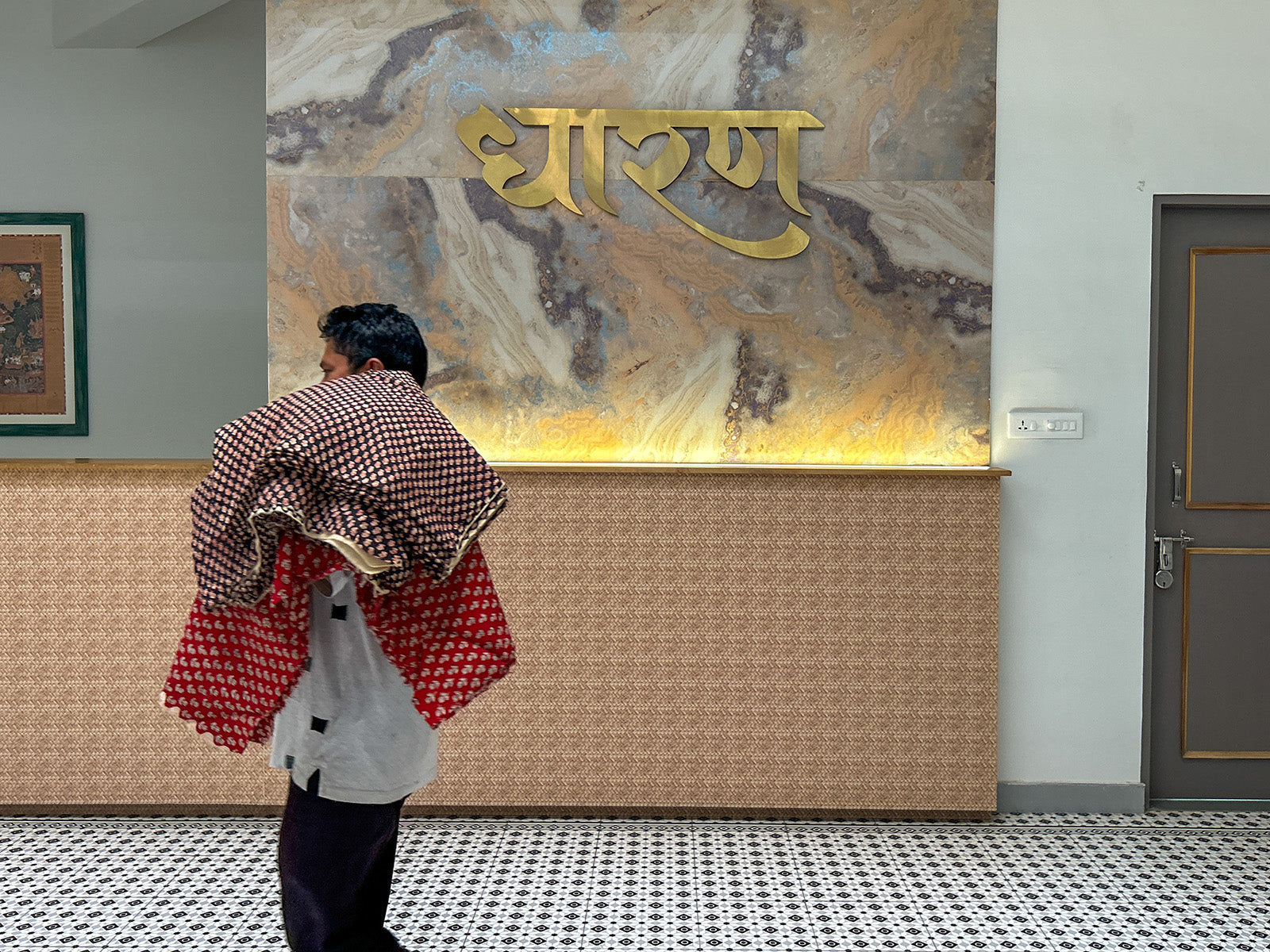Article: Chintz Dharan

Chintz Dharan
In Bloom: Chintz and Garden-Inspired Motifs
For those who cherish process over pace and patterns that are relatively more interesting than aesthetics — Dharan’s Gulmohar Galore is a study in floral storytelling, rooted in centuries-old textile heritage and reimagined with understated elegance.
Understanding Chintz: A Textile Legacy
The word Chintz has its origin in the Hindi cheent, signifying “spotted” or “sprayed.” While in the modern day, it stands for vintage florals, its origins are far more elaborate. Chintz appeared in India around the early 1600s and was one of the country’s most sought-after textile exports. Predominantly, shiploads were sent to Europe, where it was loved for its vivid botanical depictions, colorfastness, and artisanal detail — unlike anything being
produced in the West back then.
Primarily, Chintz was hand-painted and resist-dyed using wax or mud, under a laborious method that resulted in vibrant, multi-colored compositions. With time, block printing became a popular technique — paving the way for the duplication of complex motifs in less time, while preserving artistic integrity. Among the most iconic of these was the Tree of Life — a symbolic motif often flanked by birds, buds, and curving tendrils, commonly showcased in Palampores. These were large Chintz strips, usually hand-painted or printed on cotton, used as bed covers and wall hangings in Mughal and Deccani courts.
Dharan’s Revival: From Archives to Everyday
At Dharan, this historical artistry isn’t merely referenced — it is researched, revived, and restored through a deeply rooted design process. Gulmohar Galore is part of this journey: a collection inspired by archival Chintz, reinterpreted through modern silhouettes and sustainable practices.
The process begins with hand-carved wooden blocks, seasoned in oil for weeks to ensure smooth ink transfer and fidelity of detail. These blocks, many passed down through artisan families in Rajasthan and Gujarat, are used to imprint natural motifs on breathable fabrics like Cottons, Chanderis, Silks, and more. Each design is applied layer by layer using natural and AZO-free dyes extracted from pomegranate rind (Anaar), Harda, Indigo, and Dawde ke phool—yielding palettes of muted pastels and earthy richness.
Why It Matters
In a world motivated by fleeting and algorithmic trends, Dharan chooses to step aside — focusing instead on storytelling through textiles. Every garment in Gulmohar Galore is a quiet nod to Indian botanical art, generational expertise, and unparalleled textile traditions that once ruled trade routes.
This isn’t trend-chasing. It’s time travel — to the beautiful verandahs of old homes, backyards full of bougainvillea, and the quiet hush of sarees drying on lines. This is a walk down the memory lane. A belief that clothes can be beautiful, meaningful, and enduring.
Gulmohar Galore: What to Expect
From twirly dresses made for monsoon music videos in your head, to easy tunics that vibe with both coffee runs and couch days—Gulmohar Galore is all about slow fashion that doesn’t try too hard, but still turns heads. Wear it to brunch. Or don’t go anywhere. Just feel good. Because these aren’t outfits—they’re soft mood boards. For when you want to look like yourself, but cooler. Let your wardrobe bloom. One block-printed petal at a time.
Conclusion
No frills, no filters—just really good clothes. Made to feel like your favorite memory, styled for right now. Gulmohar Galore isn’t trying to be cool. It just is. Add to cart. Thank us later.



